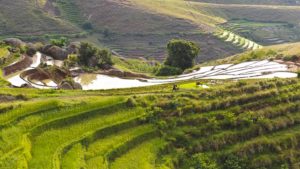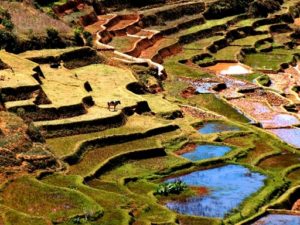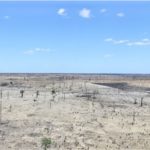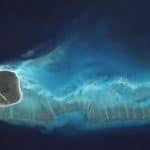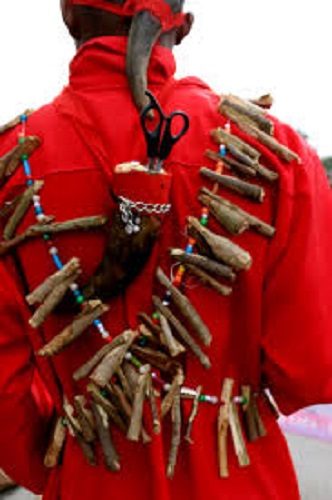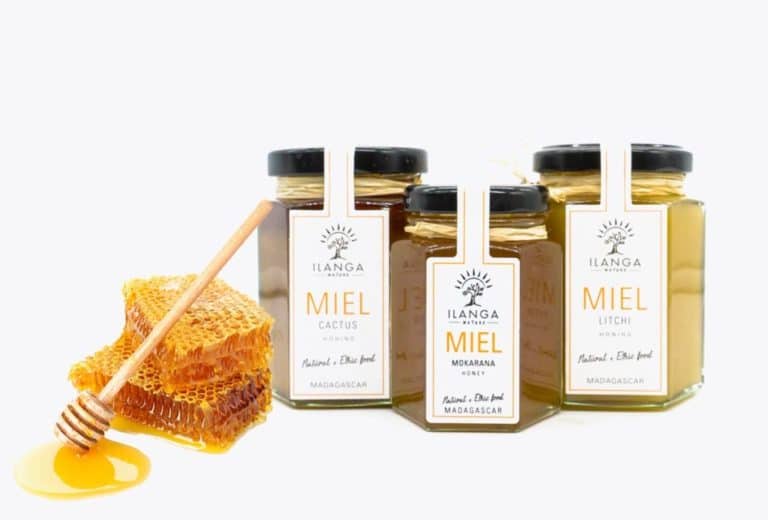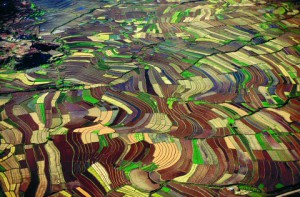
The daily sacred grain
If you think that the biggest rice eaters in the world are to be found in Asian countries, one look at the daily menu of the Malagasy population will quickly reveal that you are mistaken. In Madagascar, most people eat rice three times a day and the Consumption per capita is a good 250 kilograms per year. This means that Madagascar's rice consumption exceeds that of Asian countries many times over.
Rice is clearly the staple food of the Madagascanswhose ancestors come from the Asian regions of this earth, according to experience. However, the rice in Madagascar does not necessarily find the best conditions to thrive well, strong and productive. Especially in the dry regions in the south of the country, which you can visit for example on one of our Individual travel to the land of thorn people or can explore on the 19-day trip from Antananarivo to Tulear, rice cannot be planted. In Madagascar, however, rice plays an important role not only with regard to the daily food supply of the people. Many of the numerous tribes worship the small grain and see something sacred in the rice plant. Accordingly, everyone can quickly explain why the Madagascans are so invest a lot of energy in the cultivation of rice, although sowing and harvesting other plants would be quite easier, cheaper and more profitable
Rice - a curse and a blessing for Madagascar
The large-scale cultivation of rice is one of the main factors on the island of Madagascar that has increasingly upset the natural balance on the island over the years. Large areas had to be cleared for rice terraces and cultivation areas, and current developments show that even today there has been no change in awareness in this regard. Still numerous forest areas clearedThe rice in Madagascar is grown on terraces in order to achieve the highest possible yields with the help of the two cultivation methods commonly used in Madagascar. Rice in Madagascar is cultivated on terraces, following the traditional methods used in Indonesia. Depending on the region in which the rice is cultivated Up to three harvests per year possible, but in most cases the yields are not sufficient to supply the majority of Madagascans. Therefore Inferior rice purchased from abroad. Many rice farmers who actually grow their own rice cannot afford to eat it themselves and sell their yields to afford the cheap low-quality rice from abroad.
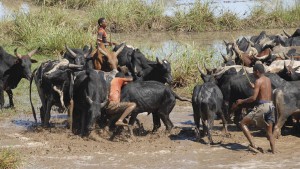
The Cultivation of rice in Madagascar is laborious and requires both a lot of physical strength and numerous hours of tireless effort. The first method of cultivation works as follows: In November, the rice is sown in small boundaries of the irrigable rice fields. The huge areas of rice fields, on the other hand, are laboriously dug up by human hands with a narrow spade. This is followed by irrigation. As soon as the clods are sufficiently soaked, they are trampled and broken up either by zebus or by primitive harrows. Since tilling the fields takes such an investment of time and energy, it is possible for several fields not tilled at the same time be. Often several families work together to be able to cultivate a single field. In addition to this wet method, there is also a so-called "dry" method, which however only in the highlands of Madagascar and for which no external irrigation is provided. Here, however, those responsible always hope for a lush rainy season so that the rice can thrive even without irrigation. In the central plateau of Madagascar the numerous rice terraces offer a beautiful and unique sightwhich you should not miss. Also on our Tours to the East Coast you can discover numerous rice fields and itself Be enchanted by the exotic charm of the island of Madagascar. If you are interested in learning more about the rice culture and general customs in Madagascar, or more generally have a desire to Trip to Madagascar If you have any special wishes, please let us know. We will gladly take over the individual travel planning for you.

